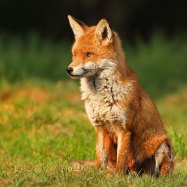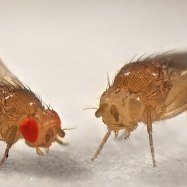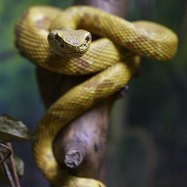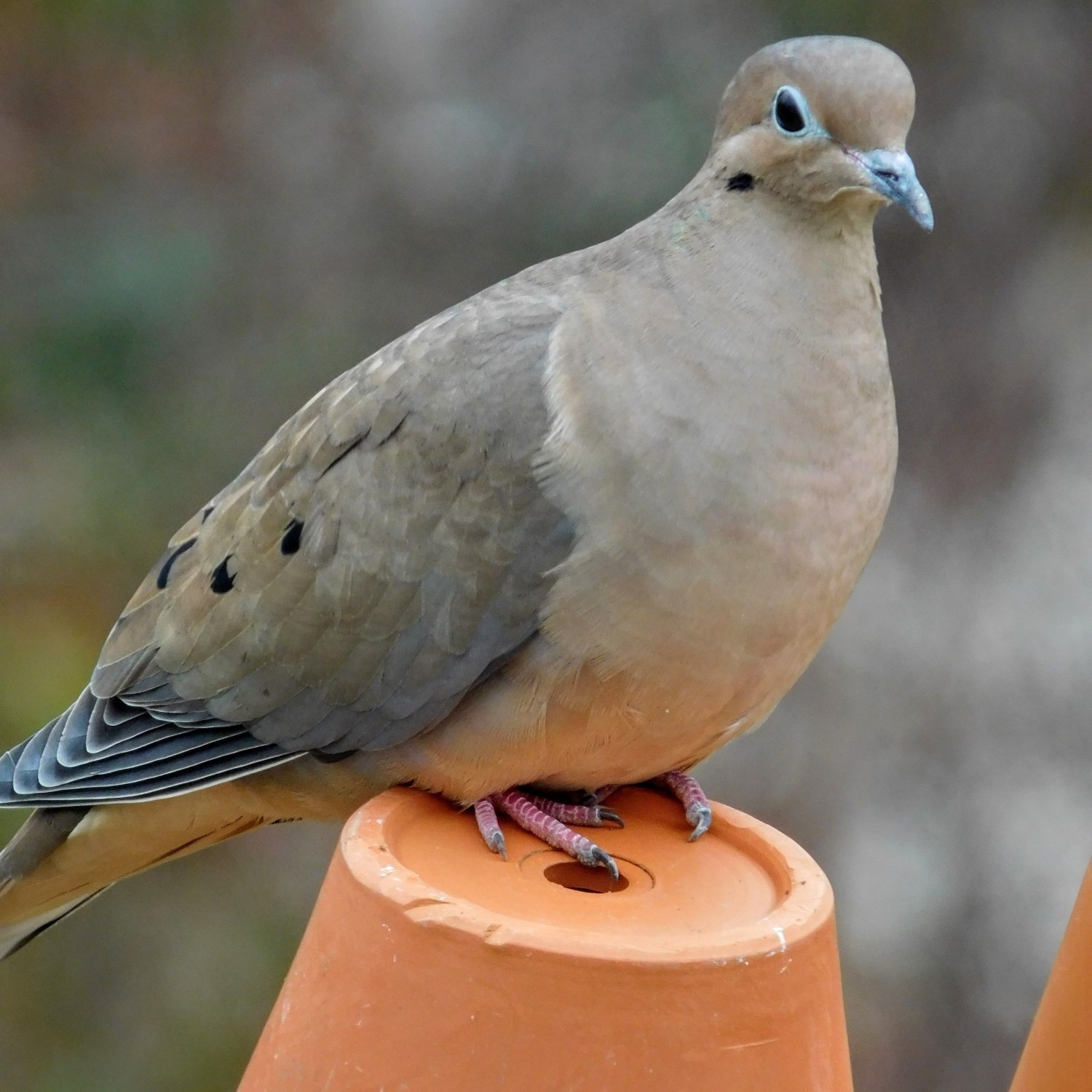
Mourning Dove
9-13 inches
Introducing the Mourning Dove, a slender and plump bird found in North America. Ranging from 9-13 inches long, this peaceful creature belongs to the Columbidae family. Spot this beautiful bird with its distinctive cooing call in a variety of habitats, from urban areas to wooded forests. #MourningDove #NorthAmerica #Columbidae
Animal Details Summary:
Common Name: Mourning Dove
Kingdom: Animalia
Habitat: Open woodlands, farms, urban areas
The Graceful Mourning Dove: A Symbol of Peace and Serenity
Watching a Mourning Dove in its natural habitat is like witnessing a ballet performance. With its slender and graceful movements, this bird captures the hearts of all who observe it. This beautiful creature, scientifically named Zenaida macroura, is commonly known as the Mourning Dove. Found throughout North and Central America, it is a fascinating species that has captured the attention of nature lovers all over the world Mourning Dove. In this article, we will delve into the wonderful world of the Mourning Dove, exploring its habitat, feeding habits, geographical distribution, body features, and more.Kingdom Animalia: Welcoming the Mourning Dove into the Animal Family
Classified scientifically under the kingdom Animalia, the Mourning Dove belongs to the phylum Chordata, which comprises animals with a spinal cord. It belongs to the class Aves, indicating its bird class, and the order Columbiformes, which includes pigeons and doves. This species belongs to the family Columbidae, meaning it is related to other pigeons and doves. Unlike its close relatives, the Mourning Dove has a unique and distinct appearance, making it easily distinguishable from other birds.The Habitat of the Mourning Dove: Turning Cities into Woodlands
One of the most interesting aspects of the Mourning Dove is its adaptability to different habitats. These birds can be found in open woodlands, farms, and even in urban areas. They are frequent visitors to backyards and parks, making them a common sight for city dwellers. While they are not picky about their surroundings, they do prefer areas with trees for nesting and roosting Mola Mola. Their preference for open woodlands makes them a familiar sight in rural areas, where they can be found perched on branches or foraging on the ground.Feeding Method: Granivorous Mourning Doves
Mourning Doves have a strictly granivorous diet, meaning they feed primarily on seeds. They have strong, sturdy beaks that allow them to crack open tough shells, such as those found on seeds. These birds can swallow their food whole, thanks to a specialized muscle in their throats that can expand to accommodate large food items. In addition to seeds, Mourning Doves also feed on fruits and insects, making them valuable contributors to the ecosystem.Geographical Distribution: From North to Central America
Mourning Doves are found throughout North and Central America, making them a widespread and abundant species. They are most commonly found in the United States, where they are native. However, they can also be found in Canada, Mexico, and even parts of the Caribbean. Their adaptability to various habitats has allowed them to thrive in different regions and contribute to the biodiversity of their respective countries.The United States: A Country Proudly Hosting the Mourning Dove
The United States is home to a diverse range of animal species, and the Mourning Dove is one of its unique and precious inhabitants. This bird is a familiar sight in the country, with its distinct light grayish-brown coloration and slender body shape. It is often seen perched on telephone wires or rooftops, emitting its signature mournful cooing sounds. The Mourning Dove has become an icon of American wildlife, with its image appearing on postage stamps and even state license plates. It is a beloved and treasured species in the country.Elegant and Plump: A Closer Look at the Mourning Dove's Physical Features
The Mourning Dove has a distinct appearance that sets it apart from other birds. It measures 9-13 inches in length, with a plump and slender body shape. Its wingspan can reach up to 17 inches, allowing it to soar gracefully through the sky. This bird has a unique coloration, with its back and wings being light grayish-brown, while its head and underparts are a darker shade. Its tail feathers are long and pointed, giving it a distinctive appearance.An Enchanting Display: The Mourning Dove's Graceful Flight
What sets the Mourning Dove apart from other bird species is its graceful and elegant flight. Watching it glide effortlessly through the air is a true spectacle. With its pointed wings and streamlined body, it appears to be dancing in the sky. These birds are also known for their swift and agile movements, making them an exciting sight to behold. Their ability to maneuver through tight spaces also allows them to avoid predators, ensuring their survival in the wild.A Symbol of Peace and Serenity: The Cultural Significance of the Mourning Dove
Throughout history, the Mourning Dove has been a symbol of peace and serenity in various cultures. In Native American mythology, these birds are believed to bring messages of peace and harmony from the spirit world. In Christian traditions, the dove is a symbol of the Holy Spirit and represents peace and love. The dove is also associated with Aphrodite, the Greek goddess of love, symbolizing love, and harmony. These beliefs and cultural associations have elevated the Mourning Dove's status to that of a revered creature among many cultures.In conclusion, the Mourning Dove is a fascinating and captivating species that continues to captivate the hearts of all who observe it. With its graceful movements, elegant appearance, and cultural significance, it is no wonder that it has become an icon of peace and serenity. This remarkable bird is a testament to the wonders and mysteries of the animal kingdom, reminding us of the beauty and diversity found in the natural world. As we continue to protect and preserve our environment, we must also ensure the survival of the graceful Mourning Dove, a symbol of nature's resilience and grace.

Mourning Dove
Animal Details Mourning Dove - Scientific Name: Zenaida macroura
- Category: Animals M
- Scientific Name: Zenaida macroura
- Common Name: Mourning Dove
- Kingdom: Animalia
- Phylum: Chordata
- Class: Aves
- Order: Columbiformes
- Family: Columbidae
- Habitat: Open woodlands, farms, urban areas
- Feeding Method: Granivorous
- Geographical Distribution: North and Central America
- Country of Origin: United States
- Location: North America
- Animal Coloration: Light grayish-brown
- Body Shape: Slender and plump
- Length: 9-13 inches
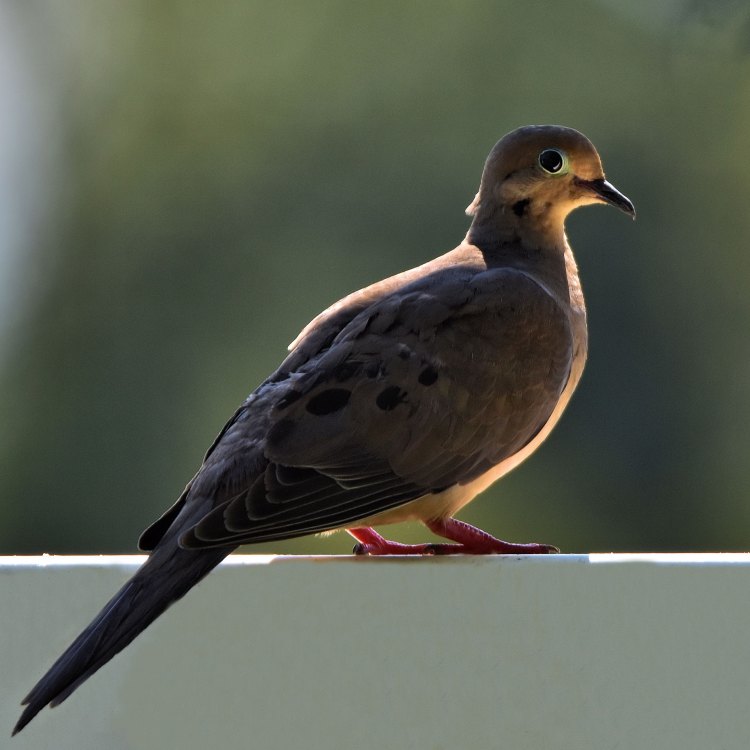
Mourning Dove
- Adult Size: Small to medium-sized bird
- Average Lifespan: 1-5 years
- Reproduction: Monogamous
- Reproductive Behavior: Builds simple nests in trees
- Sound or Call: Soft, mournful cooing sound
- Migration Pattern: Migratory bird
- Social Groups: Usually found in pairs or small flocks
- Behavior: Timid and wary
- Threats: Hunting, habitat loss, predation
- Conservation Status: Least Concern
- Impact on Ecosystem: Seed dispersal
- Human Use: Game bird, hunting
- Distinctive Features: Long, pointed tail, white-edged wings
- Interesting Facts: Mourning Doves are one of the most abundant and widespread bird species in North America.
- Predator: Birds of prey, snakes
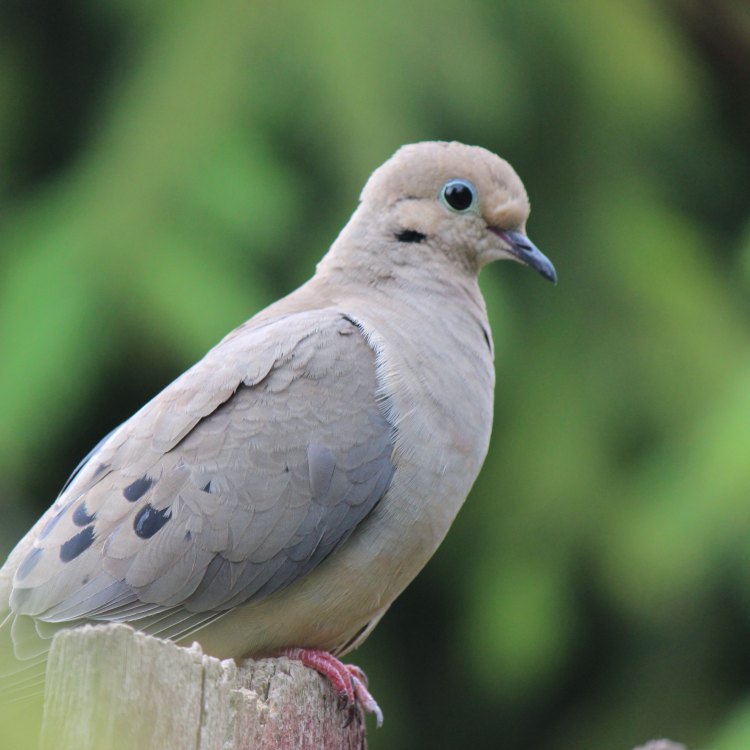
Zenaida macroura
The Mournful Story of the Mourning Dove: A Small But Mighty Bird
She perched delicately on the branch, her soft grey feathers blending into the fading evening sky. With a quick flick of her long, pointed tail, she let out a mournful coo, a sound she was known for. She was a mourning dove, a small but mighty bird that captured the hearts of many with her gentle demeanor and unique features.The mourning dove, scientifically known as Zenaida macroura, is a small to medium-sized bird native to North America PeaceOfAnimals.Com. They can be found in various habitats, ranging from forests, fields, and backyards. These birds have an average lifespan of 1-5 years in the wild, but can live up to 15 years in captivity.
One of the most fascinating aspects of mourning doves is their reproductive behavior. They are monogamous birds, meaning they mate for life. During the breeding season, which can last from spring to fall, the male dove performs an elaborate courtship display to attract a mate. The pair then build a simple nest together, typically in trees or on man-made structures. The female lays two eggs, and both parents take turns incubating them for about two weeks until they hatch.
When it comes to their migration pattern, mourning doves are considered migratory birds. They spend their summers in the northern parts of North America and migrate south during the colder months Malteagle. These birds can travel up to 600 miles in a single day, and some may even migrate as far as Central America.
Mourning doves are social birds and are usually found in pairs or small flocks. However, they are also known to gather in large groups at feeding and watering sites. These birds are timid and wary by nature, and often take cover when approached by humans or potential predators.
Speaking of predators, mourning doves face numerous threats in their natural habitats. One of the most significant threats is hunting, as these birds are often considered game birds. In many states, they have a designated hunting season, where they are hunted for sport or food. Other threats include habitat loss due to human development, predation by birds of prey such as hawks and owls, and consumption of their eggs and young by snakes.
Despite these threats, mourning doves are currently listed as "Least Concern" on the IUCN Red List of Threatened Species. Thanks to their large population and widespread distribution, these birds are not considered endangered. However, this does not mean that we can take their existence for granted. As humans continue to encroach on their habitats and climate change affects their migratory patterns, the status of these birds may change in the future.
But mourning doves do much more than grace our backyards and forests with their presence. These birds play a crucial role in their ecosystems, particularly in seed dispersal. As they forage for food, they consume and digest seeds from various plants, helping to spread them to new locations. In turn, this helps with the growth and diversity of plant species, which benefits other animals and the environment as a whole.
Human use of mourning doves dates back centuries, with these birds being hunted for food and sport. Today, they are still considered game birds and are legally hunted in many states. However, there are also strict regulations in place to ensure their populations remain stable and sustainable. Additionally, some Native American tribes consider mourning doves to be sacred animals, and their feathers are often used in traditional ceremonies.
Apart from their important role in ecosystems and human use, mourning doves have some distinctive features that make them stand out from other birds. Their long, pointed tails, white-edged wings, and small heads give them a unique appearance. Their soft, mournful cooing sound, often described as "oo-ah-oo," is also a defining characteristic that has captured the hearts of many.
But perhaps the most impressive fact about mourning doves is their abundance. These birds are one of the most numerous and widespread bird species in North America, with a population estimated to be in the hundreds of millions. They are found in almost every state in the U.S. and in many parts of Canada, making them a common sight for many bird watchers and nature enthusiasts.
However, this was not always the case. In the early 20th century, mourning doves faced a significant decline in their population due to hunting and habitat destruction. Thanks to conservation efforts and strict regulations, their numbers have rebounded, and these birds are now a familiar sight in our skies.
In conclusion, mourning doves may seem like small, unassuming birds, but their impact and importance cannot be underestimated. From their unique features and reproductive behavior to their role in ecosystems and human use, these birds have captured the attention and admiration of many. As we continue to coexist with nature, let us ensure that these mourning doves and other wildlife are protected and preserved for future generations to enjoy.
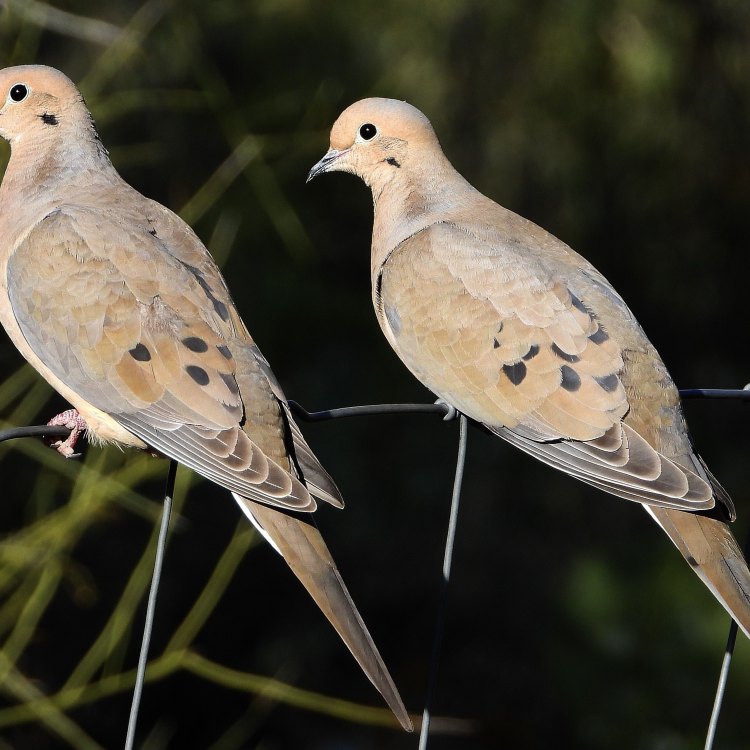
The Graceful Mourning Dove: A Symbol of Peace and Serenity
Disclaimer: The content provided is for informational purposes only. We cannot guarantee the accuracy of the information on this page 100%. All information provided here may change without prior notice.

